I got a new printer/scanner recently and since there’s only one model of this kind of device that I know of, and since it’s been working well, I am going to give it a recommendation here! I think it will be useful for anyone who needs to print and scan 11×17 sized reference and art images.
For more than a decade I have been using an Epson WorkForce 7510 combo printer/scanner because I needed to do both things frequently, and the only large-format scanners were either 1. barely any less expensive than the combo but having a separate printer would mean these functions taking up twice the space, or 2. they cost ten times as much and still needed the printer bought separately and so took up twice the space. I purchased 3 of these 7510s over the years, paying *more* the second two times after it was discontinued. It was just so convenient for my comics work to be able to print my blown-up layout pages and scan the finals with the same device.
Well, the last one finally broke a couple months ago. One of the hinges that allowed the scanner section to lift up to grant access to the ink cartridges snapped and flew across the room. A strong spring inside the broken hinge was still there and prevented the lid from closing straight, so that the sensor couldn’t register it as closed and allow even the scanner to function.
Since the nearest repair shop certified for Epson products was an hour and a half drive away, the cost of lost work time, gas, and the repair would be significant.
But, I had recently seen that there was finally a newer model with the large scanning bed – the WorkForce 7840. And, it cost less than the after-market price I paid for the previous WF 7510s.
So we packed the broken printer into the car and took it to Staples to recycle it, and to buy the WF 7840.
It is big. It is bigger than the last one–taller, at 14 inches. You need 27 inches of height to be able to open the scanner lid. It fits nicely on top of an Ikea flat file though.
This model has significant improvements over the last one – it has 3 different paper sources. Two are drawers, so I no longer have to take out the paper drawer to switch between letter size and 11×17 paper. I can leave both in the printer, and it auto-selects the paper source by size.
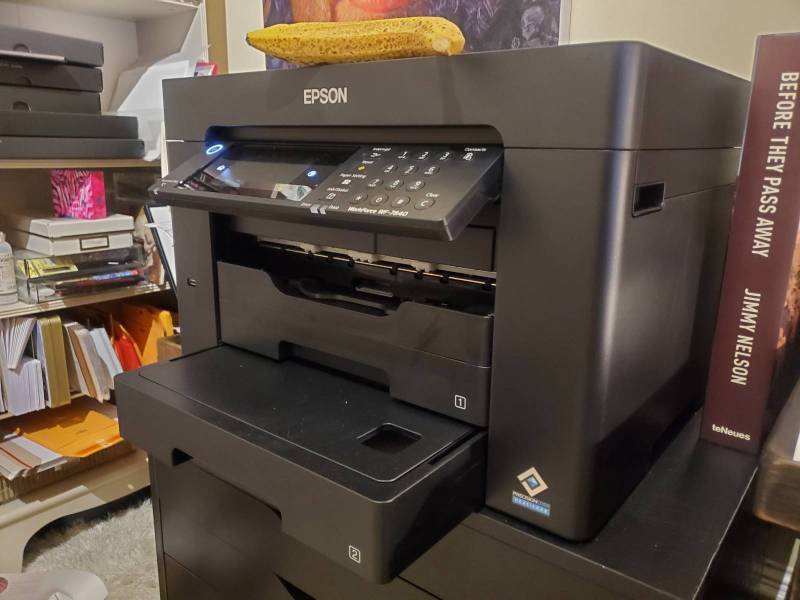
Letter paper is in Drawer 1 here, and 11×17 inch in Drawer 2 – both can be expanded for up to 13×19 inch paper. Banana for scale. Don’t be fooled by the book next to the unit, that book is a unit as well – I use it to weigh the scanner lid flat when scanning sketchbook pages.
A third source, a tray, can be opened at the back of the top of the unit, which does mean you need space behind the printer (10 or 11 inches) for the paper tray to fold out into. This means in addition to the 18 inches deep you need your shelf or table surface for the physical footprint of the unit, you need a total of about 29 inches to use the third tray, and that’s not counting the paper drawers and the printout catcher tray thingy that stick out of the front. That’s all fine for the space I’m in though, and I use the third tray when I want to print shipping labels. No need to remove or replace the letter or 11×17 inch papers from their drawers.
The print quality is pretty good. I’m not using it for the prints I sell, and would invest in a dedicated art printer if I wanted to do that (I use a professional printing service instead). But it’s been great for printing reference material and mid-process images for making transfers or to work on top of with tracing vellum. I’ve had no complaints with the prints yet, aside from some confusion over why it occasionally tells me to reload the selected paper – it is specific enough that size and type are not all; it wants to know whether you have plain paper or recycled. And the software sending your print to the printer must agree with the type of paper the printer thinks it has. Once you know to check the paper type this is easily solved on the printer’s touchscreen, though.
Now here is where it gets good. The scanner! It’s large format! For under $400! I paid full price but as of the time I am writing this it’s on sale from the manufacturer for $250!!
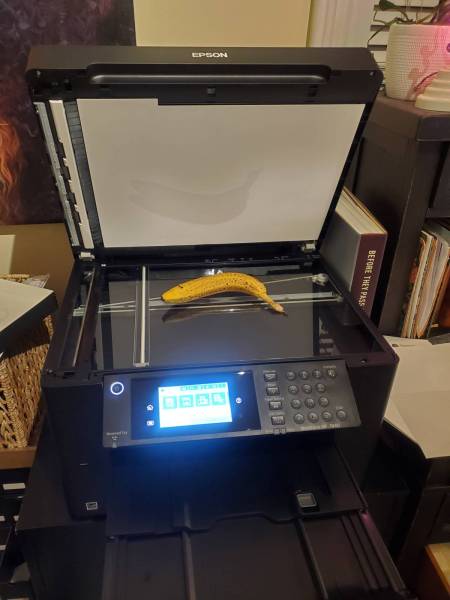
Banana for scale. I’d scan it to to test color accuracy but I don’t want to close the lid on it, so the test would be a failure anyway.
I scan graphite or ink artwork on it mostly, so I haven’t tested its color accuracy (I photograph paintings rather than scan them). Others have, and rated it pretty favorably. It can’t really do depth, so if your piece is warped, then parts of it might be out of focus. But it does have an optical resolution of 600dpi (digital can go way way higher) and can do an 11×17 inch scan all in one go. One more improvement over the last model is that it has a close-to-flush edge on two sides if you need to scan something bigger in multiple scans (though you need to fold down its control panel first so the corners of the panel don’t dent your art).
So there you have it. There is exactly one pro-sumer grade large-format printer/scanner combo on the market and I deem it Pretty Dang Good.
(There are a couple alternate versions of this unit, one with only one paper drawer (WF 7820) and one that uses refillable ink tanks rather than cartridges; that one is so very much more expensive that I did not consider it and it seems otherwise exactly the same. If you print a lot it’s probably worth it, the cartridges are expensive, but I’m still on the first set.)


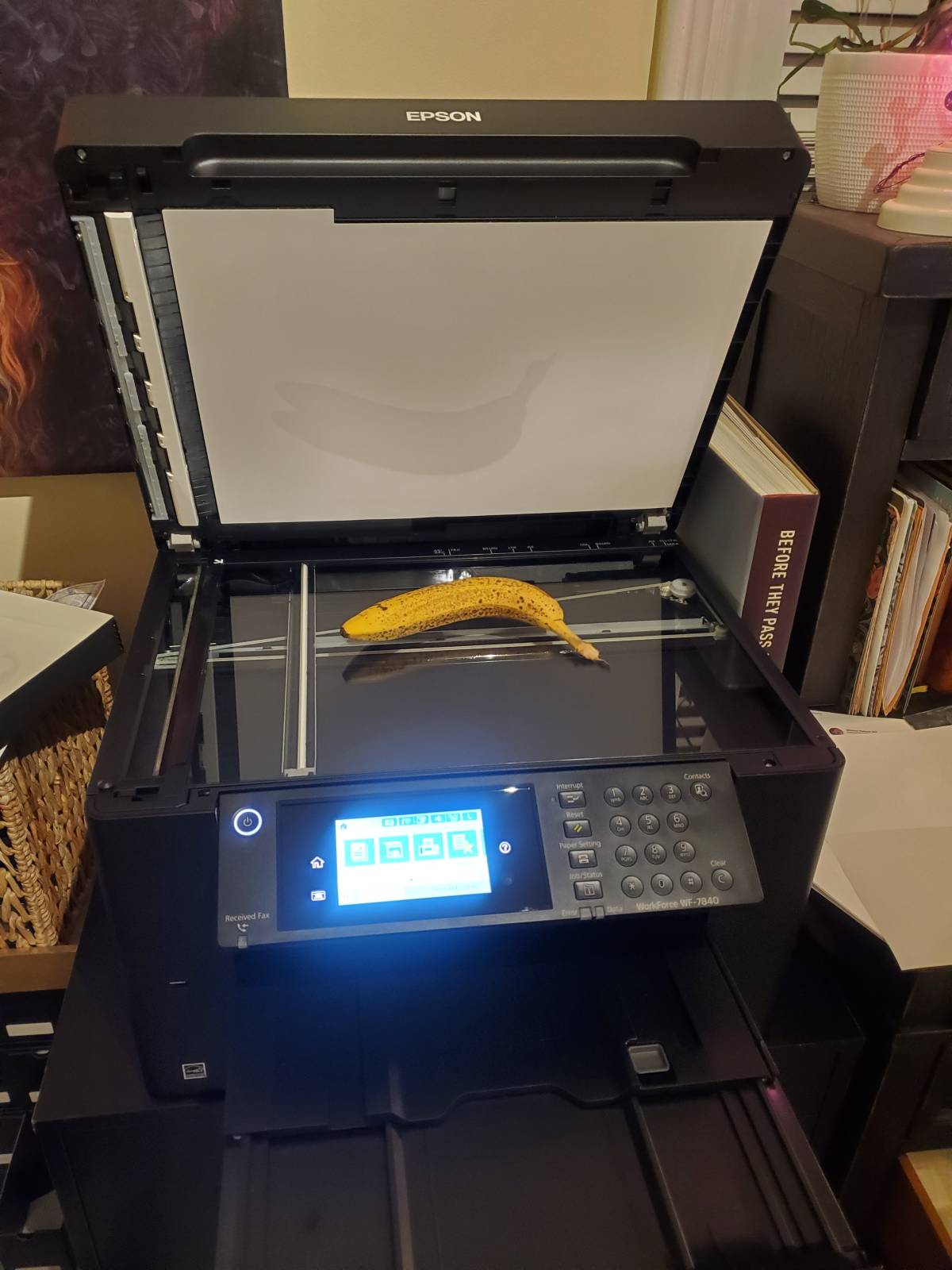
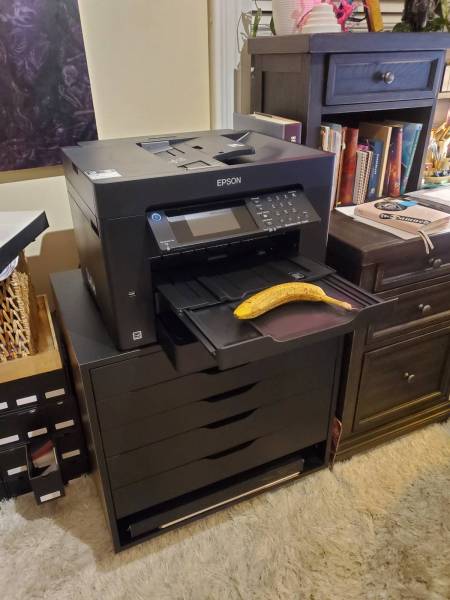
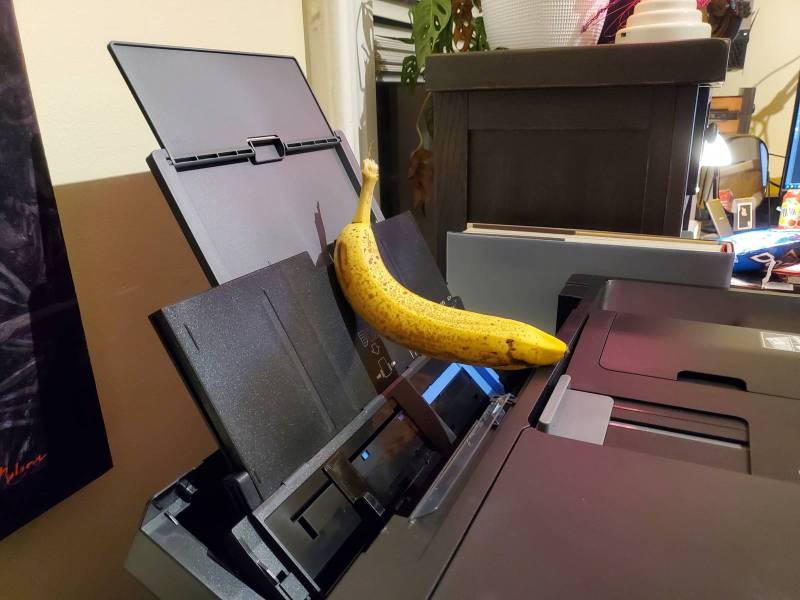
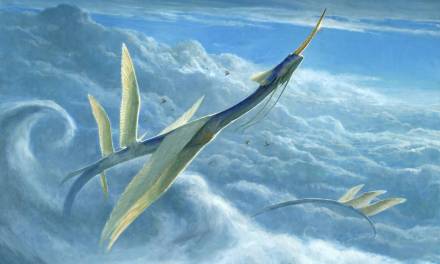
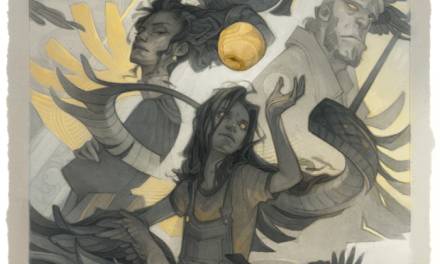
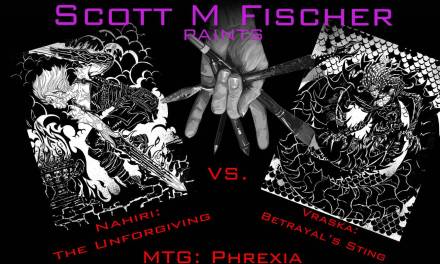
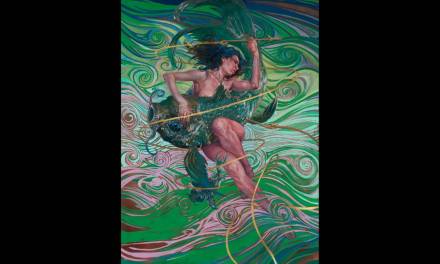
I’ve had the 7840 for.. four years now? Maybe more? I can’t remember. It is Quite Large as far as space footprint. But, it scans all my watercolors perfectly and has done so consistently. Just throwing in another five-stars here for this beast 😉
Great to hear that!!
I’ve owned two now and have been disappointed with the WiFi stability. Great
printer and scanner otherwise. And to be honest, for what it offers it is really inexpensive.
I haven’t had wifi problems yet, hopefully it holds up!
Thank you for this recommendation! I’ve been looking for something like this — 11X17 scanner and affordability.
Glad to pass on the information – it’s been out for a while but it’s strangely difficult to find scanners that even list their size in any easy-to-find place.